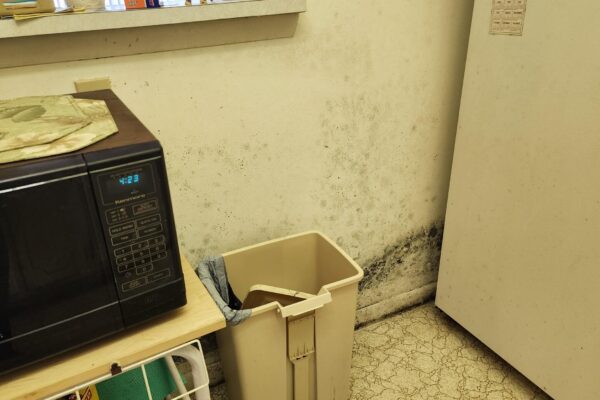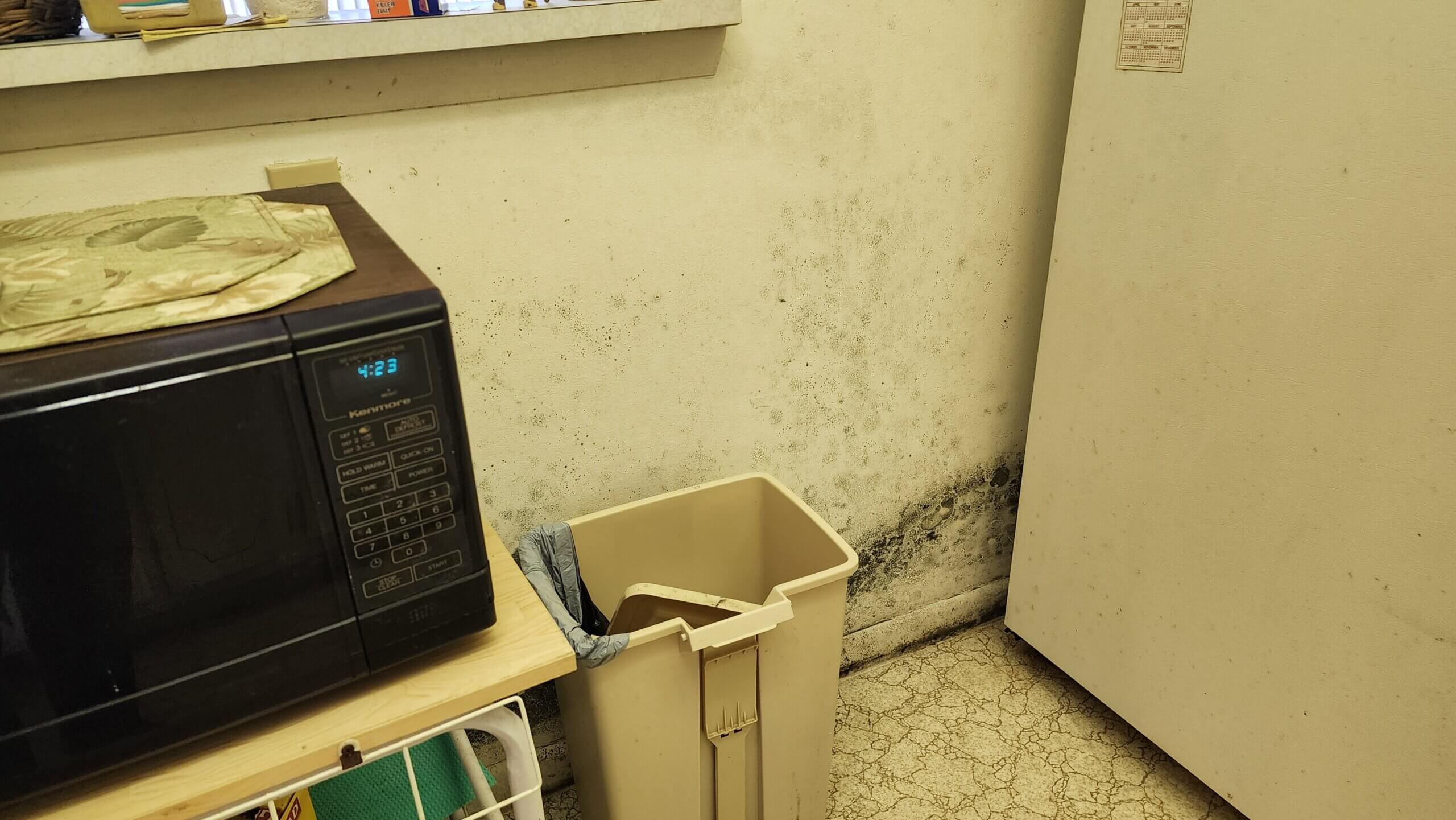Brown mold is a clear sign of excess moisture or hidden water damage in your home. Commonly found on walls, ceilings, insulation, or wooden surfaces, brown mold thrives in humid environments like Florida’s. If ignored, it can cause unpleasant odors, damage your home’s structure, and trigger health issues like coughing or sneezing.
Fortunately, most minor cases of mold growth can be resolved with safe solutions like vinegar or hydrogen peroxide. However, if the mold has spread or continues to return, professional mold remediation is often the best solution.
In this guide, let’s learn how to remove brown mold growth and solutions to prevent the problem from recurring. If the mold keeps returning or covers a large area, call Tip Top Plumbing & Restoration at 954-289-3110 for mold removal service in Pembroke Pines, FL, and neighboring areas.
How to Get Rid of Brown Mold Growth Step-by-Step
Dealing with brown mold may seem overwhelming, but you can safely remove it from small areas using the right tools and techniques. Follow this step-by-step removal process to eliminate visible mold and stop it from spreading.
Step 1: Wear Protective Gear
Protect yourself before starting any mold removal process. Wear gloves, a mask, and safety goggles to avoid breathing in mold spores or touching contaminated surfaces.
Step 2: Prepare a Cleaning Solution
Prepare a cleaner using white vinegar or 3% hydrogen peroxide. Avoid using bleach on porous surfaces like drywall or wood, as it doesn’t penetrate deep enough to kill the mold at its roots.
Step 3: Scrub the Moldy Surface
Spray the cleaner onto the moldy area using a spray bottle, let it sit for 10–15 minutes, then scrub with a stiff brush or sponge. This helps lift mold stains and remove embedded spores.

Step 4: Rinse and Wipe Clean
Use a damp cloth to wipe down the area. Be thorough in removing all loosened debris and residue from the cleaning process.
Step 5: Dry the Area Completely
Proper drying is crucial. Use fans or a dehumidifier to remove excess moisture from the room. Any leftover dampness can lead to new mold growth or even hidden mold behind walls and furniture.
Step 6: Dispose of Contaminated Items
If brown mold growth has spread into porous materials like carpet, insulation, or ceiling tiles, these items should be discarded to stop mold from spreading further.
Step 7: Monitor for Odors or Recurrence
Even after removal, continue monitoring the area for musty odors, water stains, or recurring mold problems. If you’re unsure whether the mold is fully gone, consider a mold inspection or professional mold remediation service.
When to Call for Professional Mold Removal Service?
While minor brown mold issues can often be handled with DIY strategies, there are situations where professional help is the safest and most effective solution. If the affected area is large or you’re dealing with recurring mold growth, it’s time to call in a licensed mold removal expert.
Here are signs that you need professional assistance:
- The mold covers an area larger than 10 square feet
- You notice strong, musty odors but can’t locate the source
- There are signs of hidden mold behind walls, ceilings, or floors
- Mold exposure is causing persistent coughing, sneezing, or skin irritation
- The mold has spread into HVAC systems or caused visible water damage
- Previous cleaning attempts have failed, and the mold spores keep returning
- There are visible stains, wood rot, or damage to structural materials
- The situation involves more aggressive mold species or mixed growth, such as brown mold alongside black mold or mildew
Professionals use specialized tools for mold inspection, containment, and safe removal, minimizing the risk of spreading mold spores throughout the home. Certified teams also follow strict protocols for mold remediation, including advanced drying techniques, air filtration, and full cleanup of contaminated areas.
Is Brown Mold Harmful?
When left untreated, brown mold can damage wood, drywall, and insulation, leading to structural decay and long-term water damage. It releases spores into the air, which may cause allergic reactions, skin irritation, or breathing problems, especially for those with asthma, weakened immune systems, or mold allergies.
You may also notice musty odors, surface stains, or worsening indoor air quality. The longer the mold is active, the more complex the removal process becomes, especially if hidden mold spreads into walls or ceilings.
Why Brown Mold Grows in Homes?
Brown mold occurs when moisture, darkness, and organic materials like wood, insulation, or drywall are present. These conditions are especially common in basements, bathrooms, and attics. These areas often go unnoticed until mold growth becomes visible.
Florida’s warm, humid climate creates the perfect environment for persistent mold problems. After heavy rains, high humidity, or plumbing leaks, moisture gets trapped in building materials, accelerating the spread of mold spores. Without proper drying, mold can begin to grow within just 24 to 48 hours.
Over time, you may notice musty odors, wall or ceiling stains, and even hidden mold spreading behind surfaces. Poor ventilation and lack of routine cleaning make the issue worse, especially in homes without adequate airflow or moisture control.
How to Prevent Mold Problems from Returning?
Preventing brown mold and other mold problems starts with controlling moisture and maintaining good cleaning habits. Here are practical mold prevention tips to keep your home mold-free:
- Fix leaks immediately: Address roof, pipe, or appliance leaks to stop moisture from seeping into walls, ceilings, and floors.
- Use a dehumidifier in damp areas: Keep indoor humidity below 50% to slow mold growth, especially in basements and bathrooms.
- Improve ventilation: Run exhaust fans in kitchens and bathrooms. Open windows when the weather allows to keep the air moving.
- Clean regularly with mold-fighting products: Use vinegar, hydrogen peroxide, or a DIY cleaner.
Take Action with Professional Mold Remediation Solutions
If you’re dealing with a recurring brown mold problem, don’t wait for it to get worse. While DIY steps may help in minor cases, long-term solutions often require expert support—especially when mold keeps coming back or spreads to hidden areas.
A professional mold inspection or mold testing can identify the full extent of the issue and confirm whether harmful mold spores are present in your home’s air or walls.
At Tip Top Plumbing & Restoration, our mold remediation teams use safe, proven methods to eliminate mold and prevent future growth. We’re available in Pembroke Pines and surrounding areas.
Call 954-289-3110 to discuss your brown mold problem with our team!

